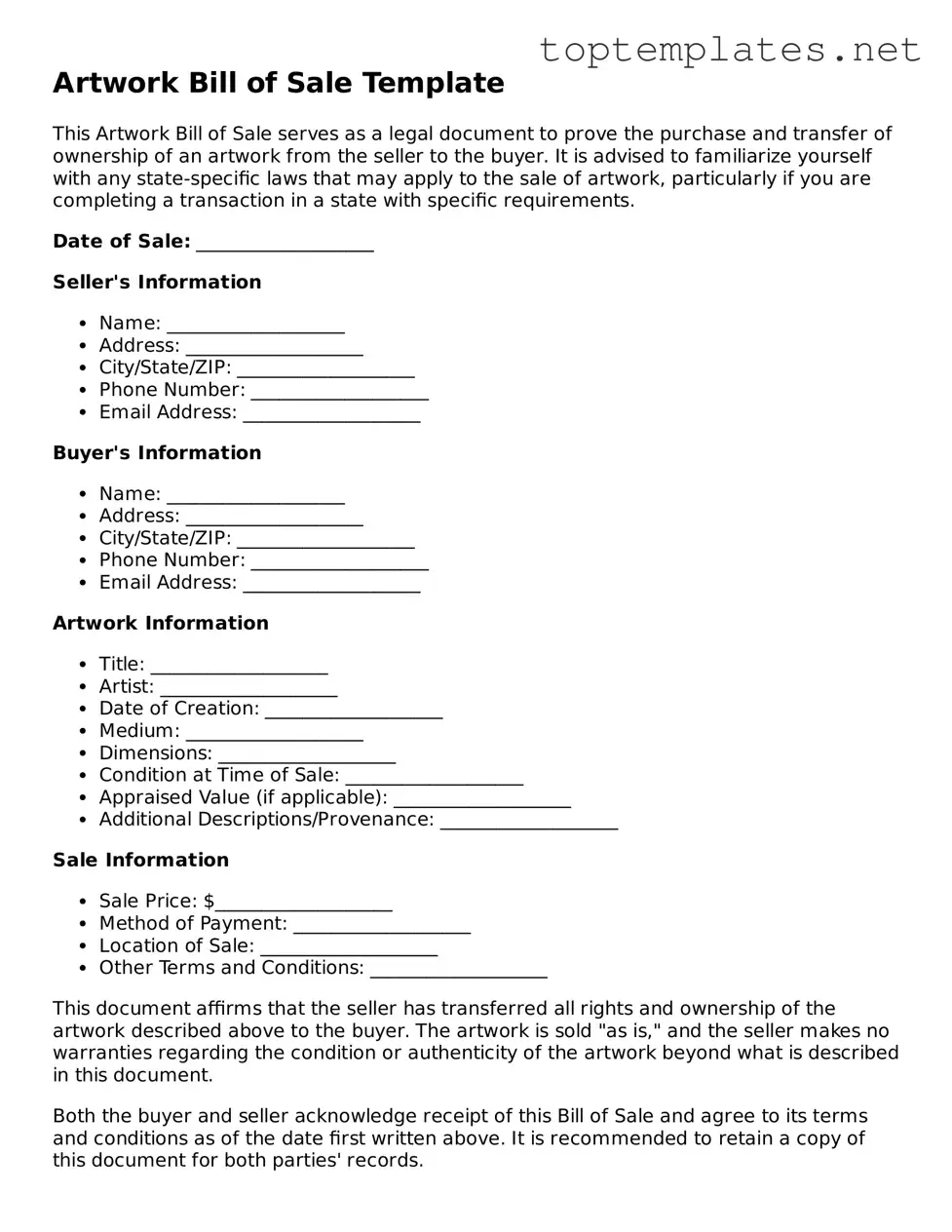What is an Artwork Bill of Sale?
An Artwork Bill of Sale is a legal document that proves the transfer of ownership of an artwork from the seller to the buyer. It serves as a receipt for the transaction and includes details such as the names of the buyer and seller, a description of the artwork, the sale price, and the date of sale.
Why do I need an Artwork Bill of Sale?
Having an Artwork Bill of Sale is crucial for both buyer and seller. It provides legal proof of purchase, helps resolve any future disputes over ownership, and is often required for the buyer to insure the artwork. For the seller, it documents the transaction for tax and record-keeping purposes.
What information should be included in an Artwork Bill of Sale?
An effective Artwork Bill of Sale should include the legal names and addresses of the buyer and seller, a thorough description of the artwork (including the artist's name, title of the piece, dimensions, materials, and any identifying marks), the sale price, the sale date, and any additional terms or conditions of the sale.
Is a witness or notarization required for an Artwork Bill of Sale?
While not always legally required, having a witness or notarization can add an extra layer of validity to the document, especially in the case of a dispute. The requirements can vary depending on local laws, so it’s recommended to check with a legal professional in your area.
Can I create an Artwork Bill of Sale on my own?
Yes, you can create an Artwork Bill of Sale on your own. However, ensuring that it includes all necessary information and adheres to your local laws is important. Templates can provide a good starting point, but consulting with a legal professional can help ensure its validity.
What should I do after completing an Artwork Bill of Sale?
After completing the Artwork Bill of Sale, both the buyer and seller should keep a copy for their records. The buyer may need the document for insurance purposes or future resales, while the seller may need it for tax purposes or legal protection.
